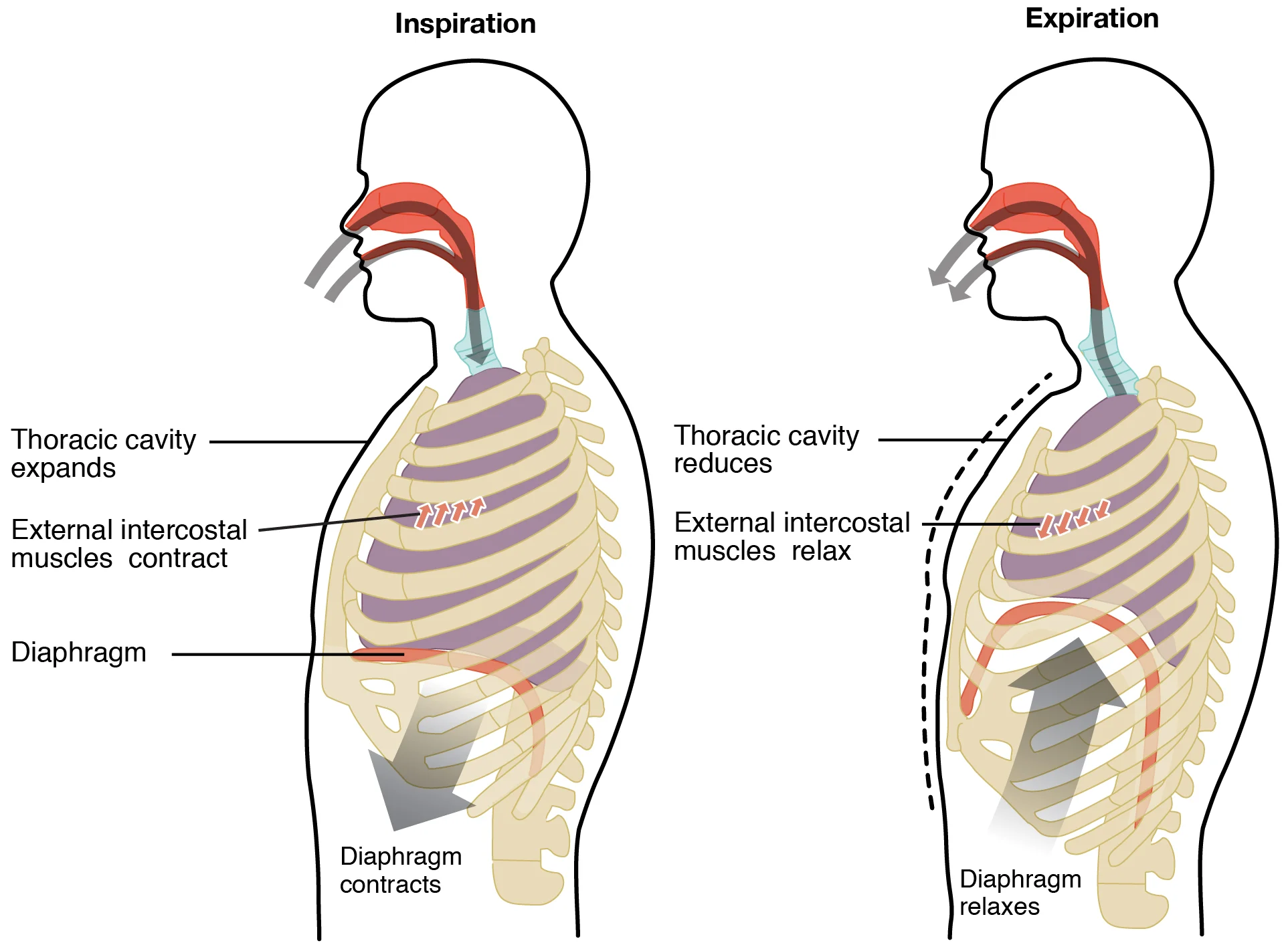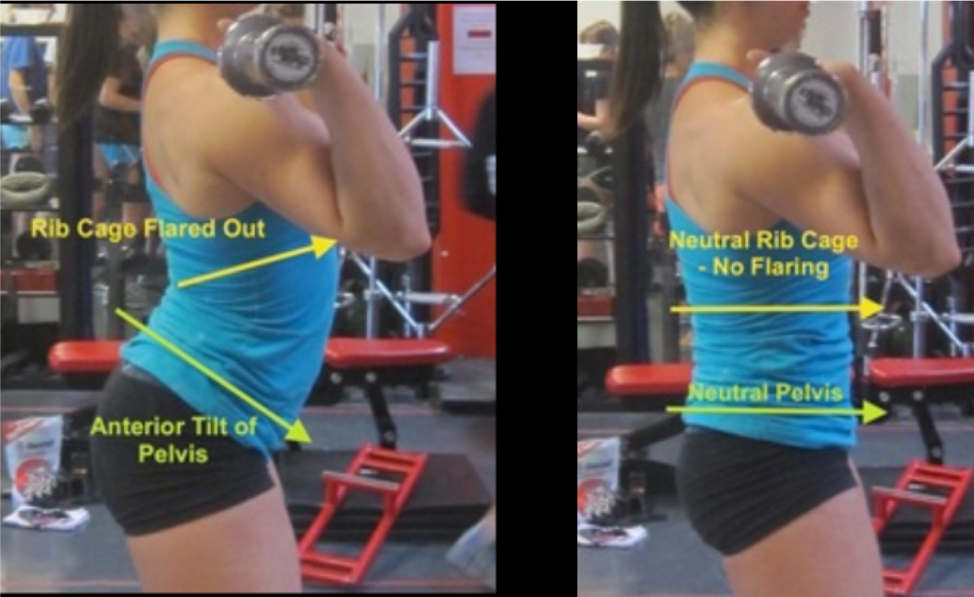Lower Back and Side Pain Hurts to Breathe
A Commonly Overlooked Cause of Lower Back Pain
Lower back pain is an EXTREMELY common problem that we see quite commonly at Diverge. On average, up to 80% of Americans will experience lower back pain at some point in their lives, and more than 1/4th of the population currently deals with lower back pain on a day to day basis. What's more, up to 80% of people that have lower back pain now have a recurrence within one year. Basically, this means if you're currently struggling with lower back pain, chances are good that at some point within the next year it will pop back up again if you don't fix the primary CAUSE of the pain now.
There are many contributing factors to lower back pain, but one of the most common (and BY FAR the most overlooked) contributors to lower back pain is dysfunctional breathing, which starts with the diaphragm. The diaphragm is a muscle located in the center of your body and attaches directly to your lumbar spine (lower back) and your ribs. It's commonly thought of as "our breathing muscle"," but the diaphragm also plays a HUGE role in core stability and lower back pain, and is the most important place to start if you're experiencing lower back pain.

The Diaphragm
THE DIAPHRAGM'S ROLE IN BACK PAIN
The diaphragm has a dual role in respiration and core stability, and it should be able to assume this dual function at all times. Lower back pain is commonly caused by a failure of the diaphragm to perform these roles simultaneously. This can go one of two ways:
For example, in long distance runners it is common for the diaphragm to devote all of it's power to breathing. Under extreme fatigue, your body isn't too worried about stabilizing…it just wants to breathe and survive. The diaphragm loses its' stabilizing function, and predisposes that runner to lower back pain.
On the other hand, when attempting to lifting something heavy, it's common to hold your breath to do so. This allows the diaphragm to focus solely on stabilizing and protecting your spine to lift the heavy load. The problem becomes when you have to hold your breath for EVERYTHING you do, other muscles are left to do the work of breathing. This can include your lower back muscles, which is a common contributor to pain.
The goal is to learn how to control intra-abdominal pressure (IAP) through proper activation of the diaphragm and core musculature. By utilizing the breath with the core, you are achieving proper core activation with every breath you take. Considering that we humans take over 20,000 breaths per day, it's kind of important to be doing it correctly, or something's going to break down in the long run.
The best way to improve your core stability and reduce lower back pain is by correcting your breathing patterns.
How does it work? I'm glad you asked.
BREATHING & CORE MECHANICS
When you inhale, the diaphragm contracts and descends into the abdominal cavity, as shown on the left. When you exhale, the diaphragm relaxes and assumes a "domed" position as shown on the right:

I like Mary Massery's description of this system as a "soda-pop can." The top of the can is your diaphragm, the front of the can is your abs, the bottom is your pelvic floor and the back is the spine and the deep muscles attached to it (multifidi). The diaphragm is the key pressure regulator here…when it's functioning correctly, you have a nice strong, sturdy can full of pressure, which helps the muscles stabilize the spine.

It's important to note that all of these muscles react automatically to proper contraction of the diaphragm. If the diaphragm isn't doing it's job to manage pressure (think of an open can of pop), it's much easier to crush that can. The core muscles stop working the way they're supposed to and other muscles have to start working harder to stabilize your spine.
The muscles that end up working harder are often your lower back muscles and hip flexors, so they end up feeling tight all the time because they're literally working all the time. This leads to constant compression of the lower back, which leaves you with chronic, nagging lower back pain.
If you've been stretching out your back and hip flexors for years and they're still tight, it's time to try something different. In our experience, the most effective solution is learning to correct your breathing patterns, manage intra-abdominal pressure and relieve the constant pressure on your back!
ADDRESSING BREATHING & BACK PAIN
There are really 3 main areas to address when thinking about lower back pain and breathing:
-
Position
-
Breathing (obviously)
-
Bracing
POSITION
Think back to the "soda-pop can" analogy. We need to keep the top of the can stacked over top of the bottom of the can. This means keeping the ribcage stacked over the pelvis, which sets your core in a position for optimal function. This allows your diaphragm, pelvic floor, abs and back muscles to effectively work together to support/stabilize the spine and minimize pressure on your back.

LEFT: POOR POSITION, RIGHT: GOOD POSITION
BREATHING
Learning how to breathe, manage pressure and control these positions is critical to maintaining long-term health of your lower back. Here's a common exercise we use at Diverge to start teaching people how to effectively breathe and stabilize their core:
Key points here:
-
Breathing sequence: silent breath in through nose >> slow/long exhale through open mouth (5-8 seconds) >> pause for a 3-5 count >> repeat, keeping lower ribs still on the inhale
-
squeeze a ball between your knees - should feel inner thighs
-
tuck your back pockets towards your knees - should feel lower glutes
-
chin away from your neck and reach long towards the ceiling the whole time
-
full exhale - should feel side abs/obliques if you do this correctly
Try out 3 rounds of 5 breaths 1-2x/day, and let us know if you have questions!
BRACING
If you're lifting heavy loads, ideally, you're able to get your spine into a good position (see above), breathe and create 360 degree expansion in your belly, sides AND your lower back, almost as if you're filling up a balloon in your belly. From there, you'd hold your breath as you lift. This is fine, as long as you do it correctly.
There are, however, A LOT of ways this can go wrong. If you have any symptoms, lower back pain or anything of that nature, then do not hold your breath until you seek out help for how to breathe and brace correctly. If you're having to hold your breath to lift up small objects or just to bend over and tie your shoes, that's a problem, and we should talk.
CONCLUSION
Big picture, lower back pain does not necessarily mean lower back injury or damage. Most of the time, back pain can be relieved and your strength/stability can be improved by addressing your breathing mechanics and learning how to move/stabilize a little differently.
If you take a crack at the exercise above, but can't seem to find the improvement you're after, please feel free to reach out to us at Diverge. We work with people like you every single day to get them back to the workouts and sports they love, without pain or movement limitations.
Thanks for reading!
Dr. Matt
Lower Back and Side Pain Hurts to Breathe
Source: https://divergept.com/blog/lower-back-pain-breathing
0 Response to "Lower Back and Side Pain Hurts to Breathe"
Post a Comment